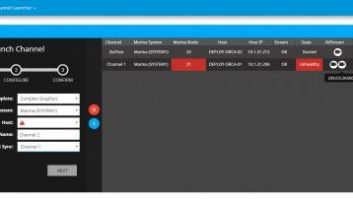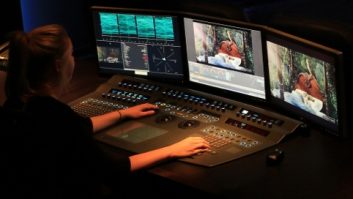Computer and storage clouds promise to supplement and ultimately replace today’s media factories, but for these implementations to be truly beneficial, the applications and solutions they deploy must be designed for the virtual environment and offer maximum flexibility and control.
Playout automation touches every area of a broadcast television or video service distribution facility, and a successful solution will need to keep pace with evolutions across the board. Control systems that accommodate the need for broadcasters to work across SDI and IP/VM environments provide operational benefits during this transition by isolating the operational staff from the underlying system architecture.
Whilst the first channels to migrate to IP delivery will be those that are highly scheduled and non-reactive, demands on the control system will inevitably increase as more playout is hosted in the cloud. Automation solutions which incorporate the ability to drive all channel variants including those with a high proportion of live content and late breaking events, or that optimise the number of channels a single operator can manage, are poised to offer the most complete solution.
The importance of media validation is thrown into even sharper focus as broadcasters move their content into virtual environments that may be at remote sites and have to rely on delivery across WAN. In such installations the operator needs to know that the output of each channel is secure, regardless of its geographical location.
Based on standard IT technology and hosted within a distributed architecture which is capable of being virtualised, Pebble Beach Systems’ flagship Marina automation lends itself to cloud-based systems for channel origination at the edge. Its highly intelligent user interface and flexible list manipulation deliver operational efficiencies. Irrespective of where the channels are hosted and regardless of the delivery platform, operators at a central location know whether content has been delivered and every event is safe and ready to play.
While broadcasters can now quickly and cost-effectively launch multiple IP channels, there is an inevitable growth in the volume of information that requires monitoring and processing. The challenge becomes how to manage multiple channels efficiently without a corresponding increase in the number of operators.
A simpler method of displaying potential problems has to be found. Our ‘Lighthouse’ monitoring by exception tool is designed to alert Marina operators by highlighting critical issues such as validation errors, timing anomalies or missing media alerts, allowing them to focus in priority sequence on upcoming problems. Lighthouse aggregates all lists within and across multiple systems, displaying a dashboard of the next problem on any channel, and enabling early intervention and resolution.
The tendency in the past has to been to introduce new technology as islands within a larger infrastructure, resulting in the heterogeneous systems we see in many facilities today. Virtualisation and abstraction offers a way forward to streamline and tackle this problem, but we cannot simply take legacy systems and re-host them within a virtual environment. Software and systems must be built from the ground-up to be fully distributed to be able to maximise the benefits of this technology.







